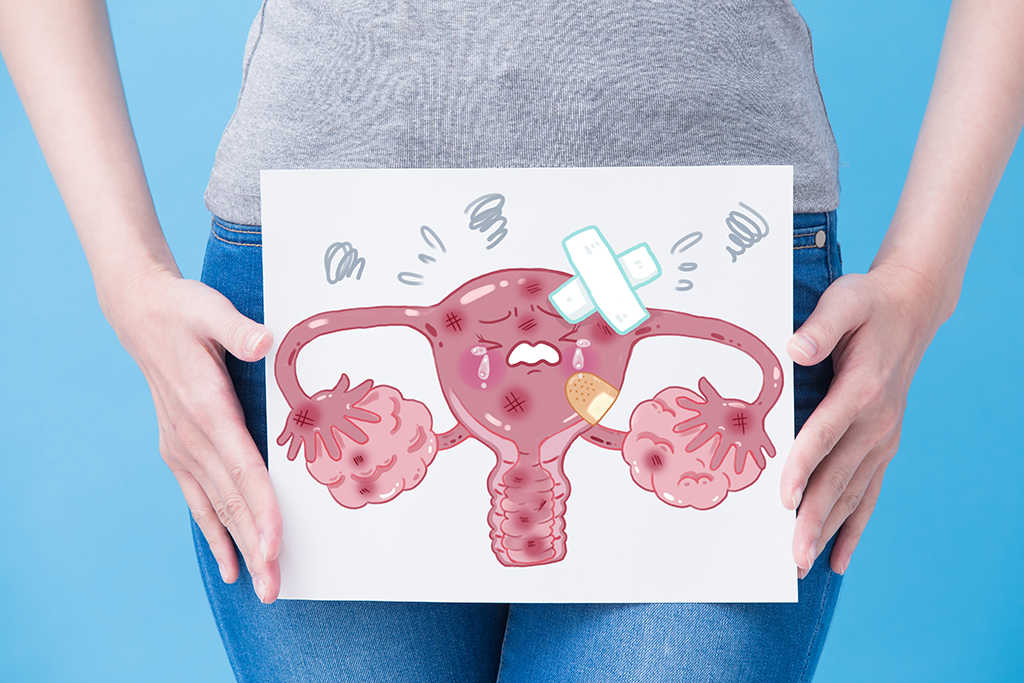What Are the Causes of Uterus Didelphys?
Uterus didelphys is a condition where the two mullerian ducts fail to merge during development. Normally, these ducts unite to form a uterus. In cases of uterus didelphys, the ducts remain separate, leading to the formation of two uteruses. Additionally, some individuals with this condition may also have two vaginas and two cervices. The reasons behind the failure of mullerian duct fusion in individuals remain unclear to healthcare providers. The exact causes of uterus didelphys are not completely understood. Some studies suggest that genetic elements could be involved. Uterus didelphys might also be associated with abnormalities in the urinary and skeletal systems.
What Are the Symptoms of Uterus Didelphys?
The interesting thing about uterus didelphys is that many women with this condition might not experience any symptoms at all. It often goes undiagnosed and is discovered incidentally during a routine pelvic exam or investigation for other reproductive issues.
However, there can be some potential signs associated with Uterus Didelphys.
Menstrual Issues
- Heavy bleeding during periods: Due to having two separate uterine linings shedding simultaneously, periods can be heavier than usual.
- Painful cramps: Similar to heavy bleeding, cramps might be more intense because of contractions in both uterine halves.
- Difficulty using tampons: If one cervix sits at a different angle or position, it might be uncomfortable or difficult to insert a tampon effectively.
Pregnancy Complications
- Miscarriage: Studies suggest a possible link between Uterus Didelphys and an increased risk of miscarriage, although the reasons are not entirely clear.
- Preterm labour: The unique shape of the uterus might influence the baby’s position and development, potentially leading to preterm labour.
- Abnormal positioning of the baby: In some cases, the baby might not be in the optimal head-down position for delivery due to the double uterine cavity leading to increased caesarean sections.
Other Symptoms of Uterus Didelphys
- Pain during sex: Depending on the location and orientation of the two uteri and cervices, sexual intercourse might be uncomfortable.
Diagnosis of Uterus Didelphys
To diagnose uterus didelphys, various tests will be conducted by healthcare professionals. These include,
- Physical exams
- Transvaginal ultrasound
- MRI scans
- Hysterosalpingograms
- Laparoscopy
These diagnostic tests will help physicians accurately identify the condition, leading to appropriate treatment options for individuals experiencing symptoms of uterus didelphys.
What Are the Treatments of Uterus Didelphys?
Patients with Uterus didelphys do not require treatment but some may need medications to alleviate symptoms, like pain or irregular bleeding, or undergoing surgery to fix any abnormalities. Most women with a double uterus lead normal reproductive lives though some may require close monitoring during pregnancy to assess the growth of the baby. In case of reproductive issues, it is important to consult with healthcare providers and receive support to manage uterus didelphys effectively.
- Surgery for Specific Issues: Surgery might be considered in some cases, particularly if you’re experiencing pregnancy complications like recurrent miscarriage or problems with fetal positioning. The type of surgery will depend on the specific issue:
- Metroplasty (Uterine unification): This is a rare procedure where the surgeon creates a single uterine cavity by stitching together the muscular walls of the two separate uteri. It’s typically only performed if there’s a clear link between the double uterus and pregnancy problems.
- Cervical septum resection: If you have a double cervix along with a double uterus, this surgery removes the tissue separating the two openings, creating a single cervix. This can be beneficial during childbirth.
Conclusion
In conclusion, uterus didelphys is a rare condition that affects a small percentage of women. It’s important to be aware of the symptoms and potential complications of this condition, as early diagnosis can lead to appropriate treatment options. If you are experiencing any of the symptoms mentioned above, it’s essential to consult with a healthcare professional for proper diagnosis and treatment. By being proactive and seeking medical attention, individuals with this condition can manage their symptoms and reduce their risk of complications.

